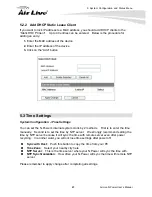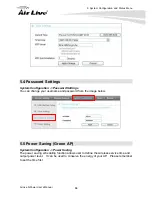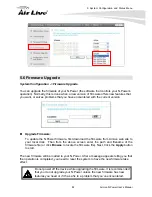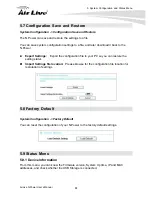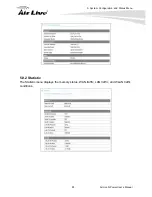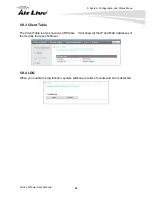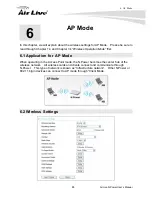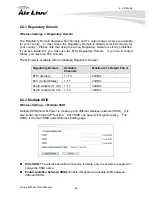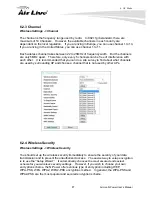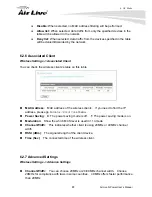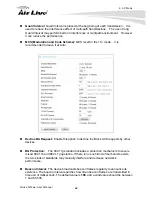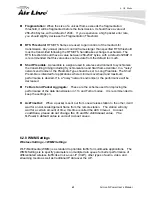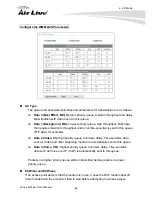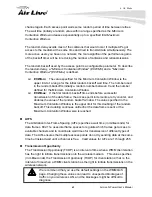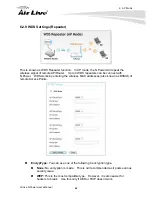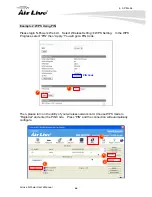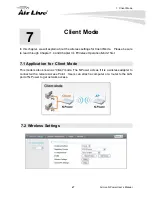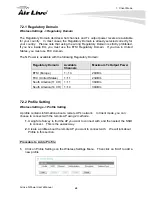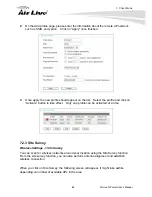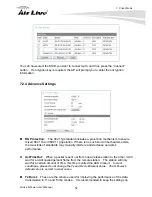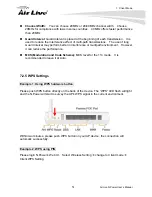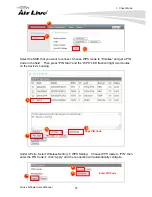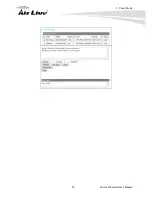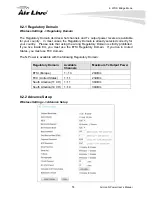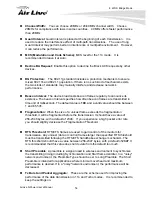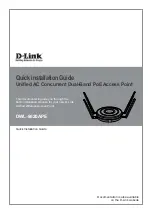
6. AP Mode
63
AirLive N.Power User’s Manual
channel again. Each access point waits some random period of time between retries.
The wait time (initially a random value within a range specified as the
Minimum
Contention Window
increases exponentially up to a specified limit
Maximum
Contention Window.
The random delay avoids most of the collisions that would occur if multiple APs got
access to the medium at the same time and tried to transmit data simultaneously. The
more active users you have on a network, the more significant the performance gains
of the backoff timer will be in reducing the number of collisions and retransmissions.
The random backoff used by the access point is a configurable parameter. To describe
the random delay, a "
Minimum Contention Window" (ECWMin
) and a "
Maximum
Contention Window" (ECWMax)
is defined.
ECWmin
: The value specified for the Minimum Contention Window is the
upper limit of a range for the initial random backoff wait time. The number used
in the random backoff is initially a random number between 0 and the number
defined for the Minimum Contention Window.
ECWmax
: If the first random backoff time ends before successful
transmission of the data frame, the access point increments a retry counter, and
doubles the value of the random backoff window. The value specified in the
Maximum Contention Window is the upper limit for this doubling of the random
backoff. This doubling continues until either the data frame is sent or the
Maximum Contention Window size is reached.
AIFS
The Arbitration Inter-Frame Spacing (AIFs) specifies a wait time (in milliseconds) for
data frames. 802.11e uses interframe spaces to regulate which frames get access to
available channels and to coordinate wait times for transmission of different types of
data. The AIFs ensures that multiple access points do not try sending data at the same
time but instead wait until a channel is free. Valid values for AIFs are 1 through 255.
Transmission Opportunity
The Transmission Opportunity (TXOP) is an interval of time when a WMM client station
has the right to initiate transmissions onto the wireless medium. This value specifies
(in milliseconds) the Transmission Opportunity (TXOP) for client stations; that is, the
interval of time when a WMM client station has the right to initiate transmissions on the
wireless network.
We recommend that you use the default settings on the WMM QoS
page. Changing these values can lead to unexpected blockages of
traffic on your wireless LAN, and the blockages might be difficult to
diagnose.

